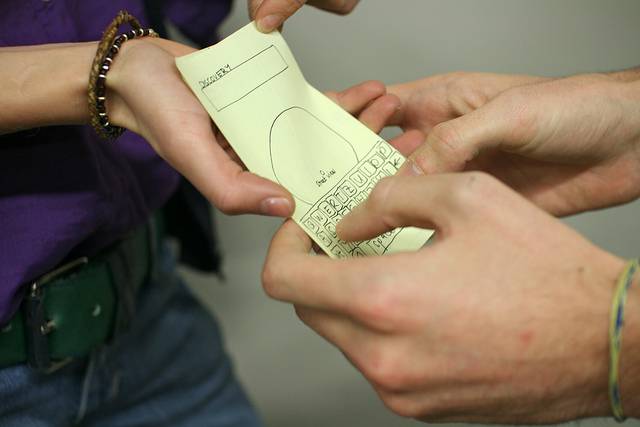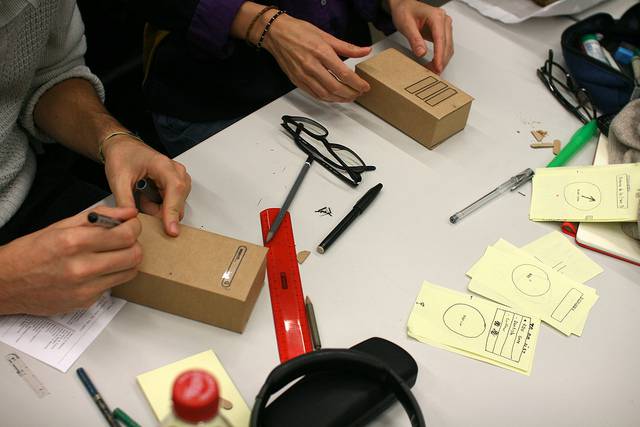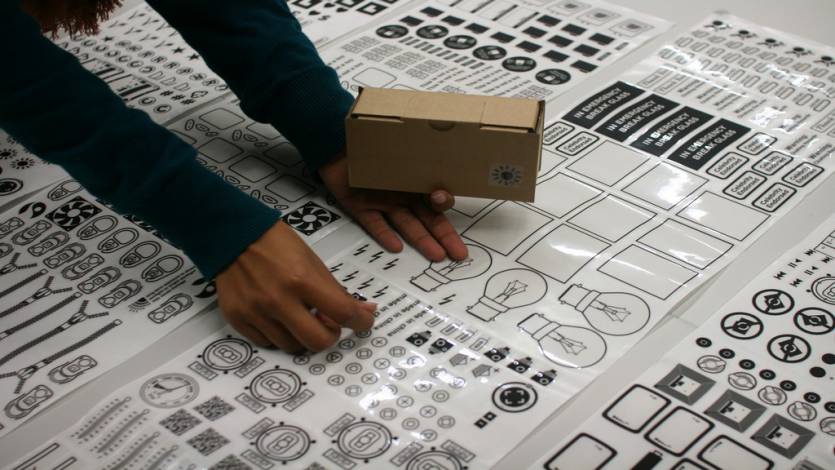There’s a good argument that prototypes can be used instead of wireframes because they serve a similar purpose. If you’re operating in an environment where most work is done parallel – this would seem like a reasonable argument too. A prototype can be very similar to a wireframe (in face a hi-fidelity wireframe and a lo-fidelity prototype are very similar) and it can also offer far more detail than a wireframe too.

Author/Copyright holder: Nicolas Nova. Copyright terms and licence: CC BY 2.0
Prototypes are working models of the finished product; they will often include much more of the design and content than a wireframe driven approach.
There are some big advantages of using a prototype over a wireframe:
- The actions and interactions on the product will be better defined and make it easier for users to provide feedback
- Prototypes are less intimidating than a wireframe – prototypes feel less like a theoretical exercise with technical documentation and more like an exercise with a real product
- Overly prescriptive use of wireframes can lead to communication breakdowns within development teams and design teams. There can be a tendency to develop so much technical documentation when using wireframes that it seems to eliminate the need for discussions on implementation
- Wireframes can slow down the development process and also the graphic design process – the effort expended on developing wireframes could, perhaps, be better spent on specifying designs
Now, wireframes have their uses too. A lot depends on the product and environment that you work with/in as to which step in the process you choose to begin with. We’ve found that environments, that really like a ton of technical documentation to get things approved, need wireframes as part of the thought process but if you’re a first-time entrepreneur – you might decide that’s not the environment you want to create and miss out the wireframing phase.
There are a fair number of prototyping tools available for you to create prototypes reasonably quickly today (something that wasn’t true say 10 years ago) and if you have the skills (and possibly budget – some of the best tools aren’t cheap) then you may decide that prototypes are easier to focus your effots on and that they produce faster results.

Author/Copyright holder: Nicolas Nova. Copyright terms and licence: CC BY-NC 2.0
There is no one-size fits all formula in UX research; if there was it wouldn’t be a growing and dynamic field – you’d just pull out an industry standard checklist and work your way through from A to Z. Whilst failing to conduct any user research is likely to be a mistake; deciding what’s right for you, your team and your business often involves a bit of trial and error.
Prototypes are an essential tool for user research and are often good for basic User Acceptance Testing prior to the finished product becoming available.
Header Image: Author/Copyright holder: NIcolas Nova. Copyright terms and licence: CC BY-NC 2.0











